New York is renowned for its buzzing barbershop culture. Walking through neighborhoods like Williamsburg or Harlem, you’ll find barbershops bustling with customers eager for the latest styles and classic cuts. The demand for skilled barbers is higher than ever, making it crucial for aspiring barbers to master a diverse set of skills. Here are 15 essential skills every barber in New York should master to thrive in this vibrant industry.
1. The Art of Cutting
Precision is key in barbering, and mastering the art of cutting is fundamental for any barber aspiring to excel in a busy barbershop in New York. Understanding different hair types and textures is essential; each individual’s hair can exhibit unique characteristics that affect how it should be cut and styled. Familiarity with classic men’s haircuts—such as the fade, pompadour, and crew cut—allows barbers to cater to a wide range of client preferences.
Practicing these styles is vital, as each requires distinct techniques and methods. For instance, achieving a seamless fade involves a careful blend of lengths that accentuates the natural shape of the head. Similarly, the pompadour calls for skill in creating volume and structure, while the crew cut requires sharp, clean lines that frame the client’s face. By honing these techniques, barbers can not only meet but exceed the diverse needs of their clientele, ensuring each client feels confident and satisfied with their look. Continuous practice and a willingness to learn from mistakes are what will set a skilled barber apart in this competitive environment.
2. Customer Service and Communication
In the bustling barbershop environment, effective customer service and communication play a crucial role in fostering loyalty and building lasting relationships with clients. A barber’s ability to understand and cater to clients’ preferences not only enhances their experience but also lays the foundation for a successful business. This begins by actively engaging with clients; barbers should ask open-ended questions to encourage dialogue and express genuine interest in their needs. For example, rather than simply asking, “What style do you want?” a more effective approach would be, “What do you like most about your current haircut, and what changes are you considering today?”
Listening attentively is equally important. Clients appreciate when their barber takes the time to understand their concerns and aspirations. A good barber listens not just to the words being spoken but also pays attention to non-verbal cues and underlying emotions, demonstrating empathy and building trust. Follow-up questions can help clarify any uncertainties, ensuring that both parties are on the same page.
To further enhance client satisfaction, barbers should also provide professional advice tailored to individual preferences, hair types, and lifestyle. This could include recommending suitable products that complement their haircut or styling techniques that will be easy for them to maintain at home. Drawing on expertise in hair care and current trends, barbers can position themselves as trusted advisors, thus encouraging clients to return for repeat visits and recommend their services to others.
Ultimately, the goal is to create an inviting atmosphere where clients feel valued and understood. A satisfied customer is more likely to become a loyal client, contributing to the barber’s reputation and success in the vibrant New York barbershop scene. By prioritizing customer service and communication, barbers can differentiate themselves and cultivate a thriving clientele that appreciates not only their technical skills but also their attentiveness and care.
3. Hygiene and Sanitation
Maintaining a clean and safe barbershop is indispensable for fostering a professional environment and ensuring client safety. Barbers should adhere to best practices for sanitation by regularly disinfecting tools, such as scissors, clippers, and combs, as well as workstations between clients. Utilizing hospital-grade disinfectants and following guidelines from health authorities can help minimise the risk of infection and cross-contamination. Additionally, keeping the shop tidy—such as sweeping hair clippings regularly and cleaning surfaces—contributes to creating an inviting atmosphere. When clients observe rigorous hygiene standards, it not only ensures their safety but also builds trust and credibility in the barber’s services, enhancing the overall client experience.
4. Product Knowledge
A strong knowledge of haircare products is essential for barbers. Being able to recommend the best shampoos, conditioners, and styling products tailored to men’s hair types ensures that clients receive comprehensive advice for their hair maintenance. Understanding different product ingredients and their benefits allows barbers to educate their clients about what works best for their specific needs. For instance, recommending sulfate-free shampoos for those with sensitive scalps or lightweight gels for finer hair can significantly enhance service quality. In addition, staying updated on trending products in the hair care industry (such as organic or natural options) can further elevate the barber’s expertise and enhance their credibility as a trusted resource. This level of product knowledge not only aids in improving hair health for clients but also supports barbers in fostering long-term relationships based on trust and valuable guidance.
5. Time Management
Efficient scheduling and service delivery are crucial in a busy barbershop environment. Barbers must manage their time effectively to maximize productivity while minimizing client wait times. This begins with creating a well-organized appointment system, whether through digital booking tools or traditional methods, to ensure a steady flow of clients throughout the day. A thorough understanding of the time each service takes—be it a haircut, straight razor shave, or styling—enables barbers to schedule appointments realistically, avoiding overbooking and the stress that comes with it.
In addition to appointments, barbers should also be adept at multitasking and prioritizing tasks. For example, while a client’s hair is being processed, a barber can use this time to clean their workstation, restock products, or consult with the next client. Incorporating short, efficient breaks can also help maintain focus and energy levels, ensuring that every client receives the dedicated attention they deserve. Furthermore, communicating openly with clients about estimated wait times can enhance their overall experience, fostering a sense of transparency and respect.
Ultimately, mastering time management not only improves workflow and client satisfaction but also promotes a positive working environment for barbers. By creating a structured yet flexible schedule that accommodates both the barbers’ and clients’ needs, a barbershop can enhance productivity, client loyalty, and the overall quality of service provided.
6. Trend Awareness
Staying updated with the latest trends in men’s haircuts and grooming is essential for barbers seeking to provide contemporary and appealing services. This involves actively following industry magazines that highlight new styles, techniques, and grooming products that resonate with today’s clientele. Moreover, social media platforms like Instagram and TikTok serve as invaluable resources where barbers can discover trending looks, engage with fellow professionals, and showcase their own work. By following influencers and hairstylists who set trends, barbers can gain insights into what styles are gaining popularity and which techniques yield the best results.
Attending trade shows and grooming conventions further enhances a barber’s knowledge base. These events provide opportunities to learn from seasoned professionals, attend workshops, and observe live demonstrations of cutting-edge techniques. Networking with peers can also lead to fresh ideas and inspiration to implement in their own practice.
Incorporating current trends into services not only keeps the barbershop relevant but also draws in a diverse and loyal clientele. Clients are more likely to return when they feel their needs and style preferences are understood and catered to. By proactively engaging with trends and continuously expanding their skills, barbers can foster an environment of creativity and innovation that benefits both their clients and their business.
7. Barbering Tools
Familiarity with essential barbering tools is crucial for delivering top-notch services in a barbershop. The primary tools include clippers, shears, razors, and combs, each serving a unique purpose in the grooming process.
Clippers are vital for creating clean, uniform cuts and styles, and barbers should be adept at using various guards to achieve different lengths. Shears are indispensable for texturizing and shaping hair, and understanding the various types, such as thinning shears or straight shears, allows for more creative styling options.
Razors, often used for detailing and finishing touches, require significant skill to ensure safety and precision. Furthermore, combs are essential for sectioning and managing hair during cuts. Regular maintenance, such as cleaning and sharpening, is necessary for these tools to function effectively and to last longer. By investing time in understanding these tools, barbers can enhance their technique, elevate the client experience, and maintain a reputation for quality.
8. The Business of Barbering
Basic business acumen is paramount for success in the barbering industry. Understanding inventory management helps barbers maintain optimal levels of products and tools, ensuring that they can provide consistent services without interruption. Knowledge of pricing strategies is equally important; barbers must balance affordability with quality to attract and retain clients while ensuring profitability.
Additionally, financial planning skills are essential for managing expenses, forecasting income, and identifying areas for growth or improvement. This includes setting budgets, tracking expenditures, and preparing for seasonal fluctuations in demand. By honing these business skills, barbers can efficiently manage their barbershop, create a sustainable income, and ultimately foster a thriving enterprise that reflects their dedication to the craft.
9. Health and Safety
Knowledge of health regulations and safety precautions is vital in the barbering profession. Ensuring a clean and safe environment contributes to a positive experience for clients and fosters trust in services provided. Barbers must stay informed about the latest guidelines issued by health authorities, including sanitation standards for tools and equipment. This involves regular cleaning and disinfecting of scissors, razors, clippers, and surfaces to prevent the spread of infections.
Personal hygiene practices are equally important, as barbers should maintain cleanliness by regularly washing their hands and wearing appropriate protective gear, such as gloves and masks when necessary. Additionally, understanding how to recognize skin conditions or infections can help barbers take appropriate action to protect both their clients and themselves.
Compliance with local and state regulations, such as obtaining the necessary licenses and permits, is essential to operate legally and avoid potential fines. Barbers should also familiarize themselves with emergency procedures, including first aid for minor injuries and the location of fire exits, to ensure a prepared response in case of an unexpected incident. By prioritizing health and safety, barbers can create a secure atmosphere that enhances client satisfaction and loyalty, ultimately contributing to the long-term success of their business.
10. Creativity and Versatility
Adaptability is a valuable trait in barbering, as it allows barbers to meet the diverse needs of their clients. Creativity plays a crucial role in this profession; barbers must be able to envision various styles and cuts that suit individual preferences and face shapes. A keen eye for detail, combined with an understanding of current trends, enables barbers to deliver unique and personalised services that stand out in a competitive market.
Versatility in handling different hair types and textures is essential for attracting a broader clientele. Barbers should be familiar with the techniques required for styling straight, wavy, curly, and coily hair, as well as how to approach specific challenges that may arise with each type. This includes knowing the appropriate products to use, the right tools for the job, and the methods that will yield the best results. Additionally, staying updated with evolving styles and techniques through education and practice can enhance a barber’s repertoire.
Embracing creativity also means being open to client suggestions and experimenting with new ideas during consultations. By actively engaging clients in the creative process, barbers reinforce trust and satisfaction, leading to long-term relationships. Ultimately, a barber’s ability to blend creativity with versatility will not only enhance their skills but also elevate their brand in the ever-changing landscape of grooming services.
11. Networking
Building professional connections within the barbering industry is essential for career growth and development. Effective networking not only helps barbers gain referrals but also provides opportunities for collaboration and sharing best practices. To expand your network, consider attending industry events such as trade shows, competitions, and barber in New York conventions, where you can meet fellow professionals, instructors, and potential clients.
Joining reputable professional associations can also offer valuable resources and networking opportunities, allowing barbers to connect with like-minded individuals who share a passion for the craft. Additionally, actively engaging on social media platforms, particularly those focused on the beauty and grooming industry, can help establish an online presence and foster relationships with clients, influencers, and other barbers. Regularly sharing your work, insights, and engaging with followers keeps the lines of communication open and promotes a positive reputation in the field.
12. Continuous Education
The field of barbering is always evolving, with new trends, techniques, and products emerging regularly. To stay relevant and ahead of the curve, it is crucial for barbers to invest in their continuous education. Enrolling in advanced courses focused on specific skills—such as hair colouring, skin care, or advanced cutting techniques—can significantly enhance a barber’s proficiency and confidence.
Additionally, attending workshops led by industry experts provides hands-on learning experiences that can introduce barbers to innovative practices and tools. Seeking mentorship from seasoned professionals is another excellent way to gain insights and guidance, as it allows for the sharing of experiences and knowledge that can be invaluable to your growth as a barber. By committing to lifelong learning and staying up-to-date with industry advancements, barbers not only improve their skill set but also enhance their ability to better serve their clients, ultimately leading to greater success in their careers.
13. Marketing and Branding
In today’s digital age, effective marketing and personal branding are essential for barbers aiming to grow their clientele and establish a reputable presence in the industry. Building a strong online presence begins with leveraging social media platforms such as Instagram, Facebook, and TikTok, where visual content thrives. Share high-quality images and videos of your work, before-and-after transformations, and engaging behind-the-scenes glimpses of your daily routine to captivate your audience.
Crafting a professional website is also vital; it should include your services, pricing, and an easy-to-navigate booking system, allowing potential clients to learn about your offerings and schedule appointments seamlessly. Alongside these efforts, creating engaging content such as blogs, tutorials, and tips on grooming can position you as a knowledgeable authority in the field. Ultimately, connecting with potential clients and nurturing relationships through regular interaction will foster loyalty and encourage referrals.
14. Adaptability to Technology
Technological advancements are rapidly reshaping the barbering industry, necessitating that barbers stay up-to-date with the latest tools and software to remain competitive. Familiarising yourself with booking software can streamline appointments, reduce no-shows, and improve overall client experience. Digital payment systems also offer convenience and security for both barbers and clients, allowing for quick transactions and efficient record-keeping.
Additionally, considering online customer management tools can aid in tracking client preferences, history, and feedback, significantly enhancing the personalization of services. Embracing these technologies not only optimizes operations but also showcases professionalism and a commitment to providing an exceptional client experience in an increasingly digital world.
15. Patience and Perseverance
Success in barbering is not solely defined by technical skills; it also heavily relies on the virtues of patience and perseverance. As with any craft, mastering the art of barbering takes time, practice, and a willingness to learn from mistakes. New barbers may face a steep learning curve, grappling with everything from perfecting haircuts to managing client interactions. It’s crucial to approach these challenges with a mindset focused on growth and resilience.
Dedication to continuous improvement means regularly seeking out feedback from clients and peers, participating in workshops or classes, and experimenting with new techniques and styles. Each experience—whether a success or a setback—offers valuable lessons that contribute to your development as a barber. Building a repertoire of skills and knowledge enables you to adapt and refine your methods over time, ensuring that you remain competitive within the industry.
Moreover, maintaining patience during slow periods or challenging client interactions can greatly enhance your professional reputation. Clients appreciate barbers who take the time to listen and respond to their needs, creating a loyal customer base that values your dedication. By embodying patience and perseverance, you not only improve your technical abilities but also cultivate a strong and trusting relationship with your clients, ultimately leading to long-term success in your barbering career.
Ready to elevate your grooming game? Visit our barbershop in New York for professional cuts and personalized service. Join our community of satisfied clients and experience the difference.


